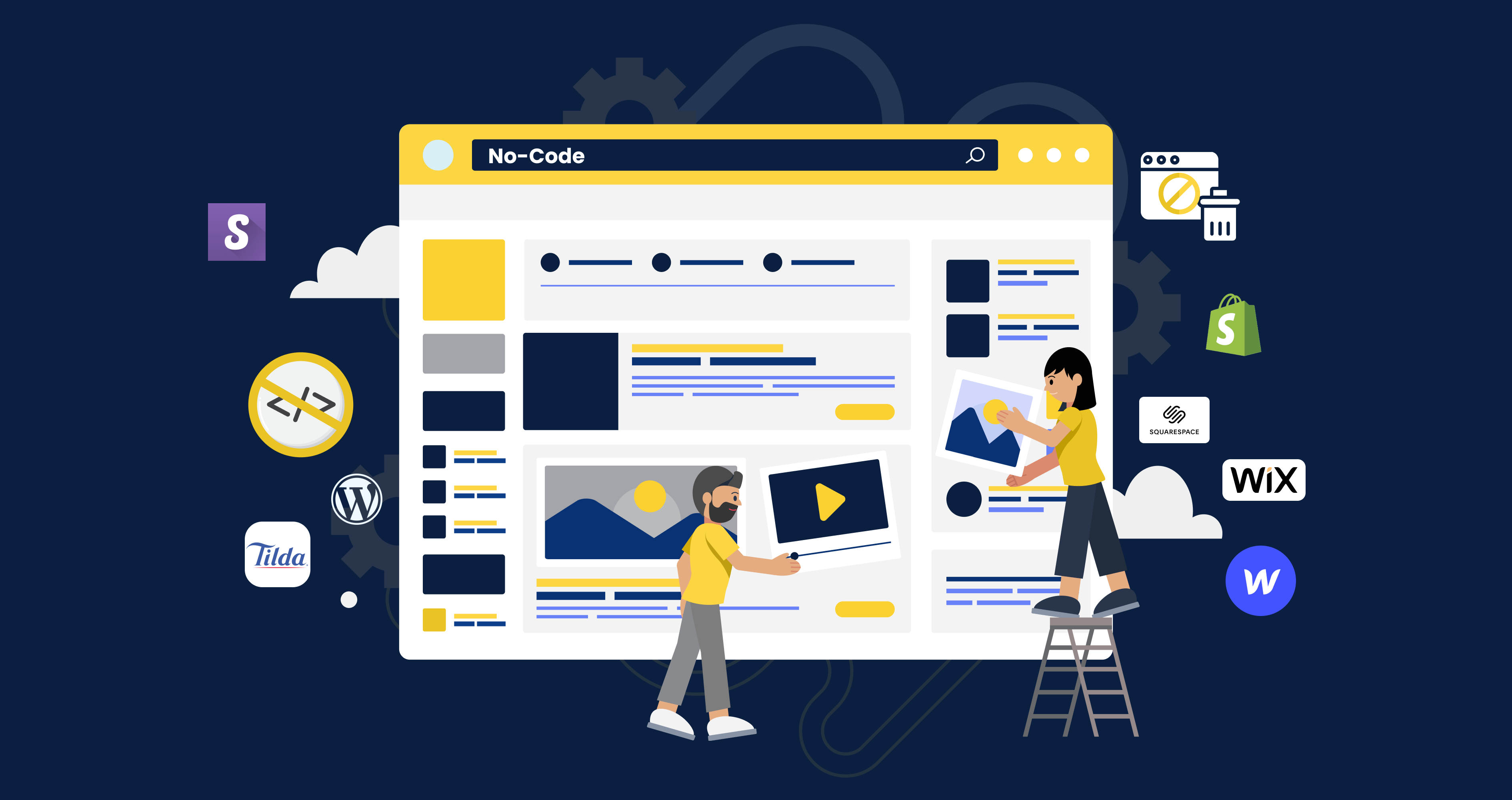Creating a website has become increasingly accessible, allowing individuals and businesses to establish their online presence without needing extensive coding knowledge. Whether you’re a small business owner, a blogger, or someone looking to showcase your portfolio, there are numerous platforms and tools available that enable you to build a professional-looking website without writing a single line of code. In this blog, we will explore the steps to build a website without coding, along with some popular tools to help you get started.

Table of Contents
ToggleStep 1: Define Your Website’s Purpose
Before diving into website building, it’s essential to clarify your website’s purpose. Ask yourself:
- What is the main goal of the website? (e.g., portfolio, blog, e-commerce, informational)
- Who is your target audience?
- What kind of content will you provide?
Having a clear vision will help guide your design choices and content strategy as you move forward.
Step 2: Choose a Website Builder
There are several user-friendly website builders that allow you to create websites without coding. Here are some popular options:
1. Wix
Wix is a versatile website builder with a drag-and-drop interface that allows you to customize your site easily. It offers a wide range of templates, apps, and features, making it suitable for various website types.
2. Squarespace
Squarespace is known for its stunning, professionally designed templates, ideal for portfolios, blogs, and e-commerce sites. It offers a user-friendly interface and integrated features like analytics and SEO tools.
3. WordPress.com
WordPress.com (different from WordPress.org) is a hosted platform that provides a user-friendly way to create a blog or website. With various themes and plugins, you can customize your site while keeping it simple.
4. Weebly
Weebly offers a straightforward drag-and-drop builder that is perfect for small businesses and online stores. Its e-commerce features make it easy to sell products directly from your website.
5. Shopify
If you’re looking to build an online store, Shopify is a popular choice. It provides all the tools you need to create a fully functional e-commerce site, including payment processing and inventory management.
Step 3: Select a Domain Name
Your domain name is your website’s address on the internet. Choose a name that reflects your brand or content and is easy to remember. Most website builders offer domain registration services, allowing you to secure your domain when you create your site.
Tips for Choosing a Domain Name:
- Keep it short and simple.
- Use keywords relevant to your content or business.
- Avoid numbers and hyphens.
- Check for trademark issues.
Step 4: Pick a Template or Theme
Once you’ve selected a website builder, browse through the available templates or themes. Choose one that aligns with your website’s purpose and visual identity. Most website builders offer customizable templates, so you can adjust colors, fonts, and layouts to suit your needs.
Things to Consider:
- Responsive Design: Ensure the template is mobile-friendly, as many users will access your site on mobile devices.
- Customization Options: Look for templates that allow for easy customization without requiring code.
- Page Layouts: Choose a layout that supports your content strategy (e.g., single-page vs. multi-page).
Step 5: Customize Your Website
With your template selected, it’s time to customize your website. Here are some key areas to focus on:
1. Add Content
Start adding your text, images, videos, and other media. Ensure your content is clear, engaging, and relevant to your audience. Use headings, bullet points, and images to break up text and make it more readable.
2. Navigation
Set up your website’s navigation to help users find information easily. Create a simple menu structure that links to essential pages like Home, About, Services, Blog, and Contact.
3. Visual Elements
Incorporate high-quality images, graphics, and videos to enhance your site’s visual appeal. Use tools like Canva to create custom graphics or edit images to match your branding.
4. Branding
Customize your website’s colors, fonts, and logos to reflect your brand identity. Consistent branding helps build trust and recognition among your audience.
Step 6: Optimize for SEO
Search Engine Optimization (SEO) helps your website rank higher in search engine results. Here are some basic SEO practices to follow:
- Keyword Research: Identify relevant keywords related to your content and integrate them naturally into your text.
- Meta Tags: Add meta titles and descriptions for each page to improve search visibility.
- Alt Text for Images: Use descriptive alt text for images to help search engines understand their content.
- Mobile Optimization: Ensure your site is responsive and performs well on mobile devices.
Step 7: Preview and Test Your Website
Before publishing your website, preview it to see how it looks and functions. Test all links, forms, and features to ensure everything works correctly. Check the site’s performance on different devices and browsers to ensure a consistent experience.
Step 8: Publish Your Website
Once you’re satisfied with your website, hit the publish button! Most website builders make this process simple. After publishing, share your new site on social media and consider implementing analytics tools (like Google Analytics) to track performance and user behavior.
Step 9: Maintain and Update Your Website
Creating a website is just the beginning. Regularly update your content, monitor performance, and make necessary improvements. Engaging with your audience through a blog or social media integration can also help keep your site dynamic and relevant.
Conclusion
Building a website without coding is not only possible but also relatively straightforward thanks to modern website builders. By following these steps and utilizing the right tools, you can create a professional and engaging website that meets your needs and resonates with your audience. Embrace your creativity, experiment with different designs, and enjoy the process of bringing your online presence to life!


No responses yet